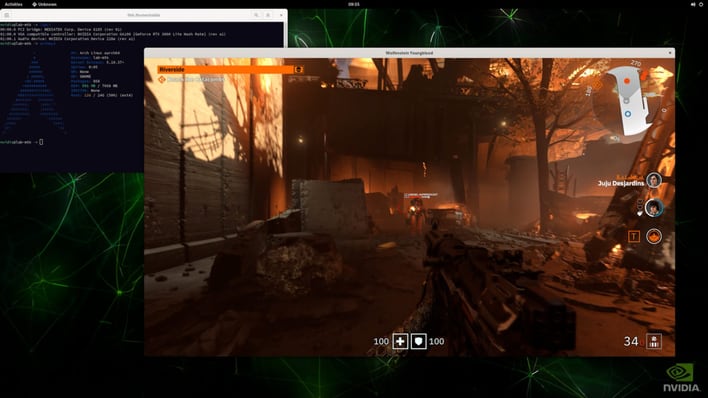NVIDIA GeForce RTX Ray Tracing And DLSS Support Comes To Arm CPUs And Linux

NVIDIA today made two significant announcements regarding its efforts to bring Arm further under its wings. First, at this week's Game Developers Conference (GDC), NVIDIA showcased demos of Wolfenstein: Youngblood and The Bistro running with RTX ray traced effects. NVIDIA's demos were running on a MediaTek Kompanio 1200 Arm processor used in conjunction with a GeForce RTX 3060 GPU.
"We're now investing in new platforms where we can deploy advanced graphics so gamers have more choice," said NVIDIA when announcing the development. "The performance and energy efficiency of ARM CPUs with NVIDIA technologies can open an entirely new class of PCs."
"RTX is the most groundbreaking technology to come to PC gaming in the last two decades," added PC Tseng, GM for MediaTek's Intelligent Multimedia Business Unit. "MediaTek and NVIDIA are laying the foundation for a new category of Arm-based high-performance PCs."
NVIDIA additionally announced that RTX SDKs are now supported on both Arm and Linux. More specifically, the five following RTX technologies are supported across the hardware and software platforms: Deep Learning Super Sampling (DLSS), RTX Direct Illumination, RTX Global Illumination, NVIDIA Optic AI-Acceleration Denoiser, and RTX Memory Utility. This is a big boon for gaming on Linux, which is increasingly becoming a more popular option (as witnessed by Valve's hot new Steam Deck).
According to NVIDIA, developers can access these SDKs for both Arm and Linux by visiting its developer website.
This latest news from NVIDIA further blurs the line between typically mobile-centric Arm processors and the desktop-class GPU architectures that we're familiar with on PC platforms. NVIDIA-rival AMD is bringing its RDNA 2 GPU architecture down to the smartphone sector in the upcoming Samsung Exynos 2200 SoC.

